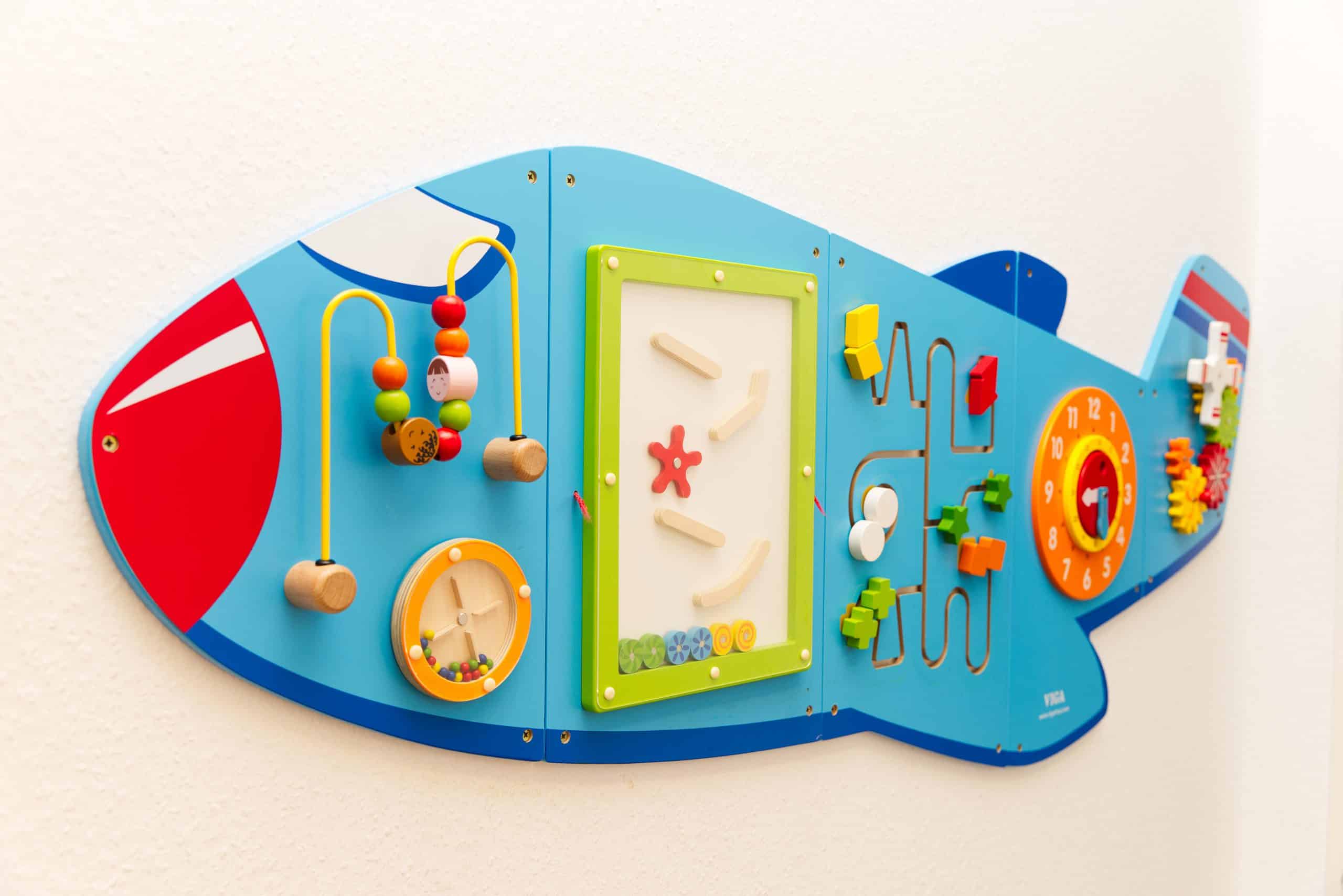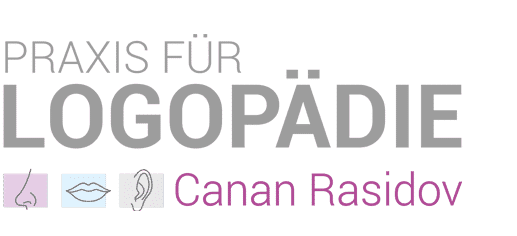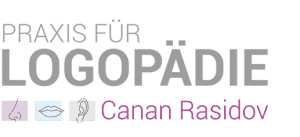5 speech therapists and speech therapy educators will be happy to help you!
Your practice for
Speech therapy Dusseldorf
Treatment, counselling and therapy of all logopaedic disorders for
Children and adolescents
and adults
Language – Speak – Voice – Swallow
Services for children and adolescents
Trouble pictures speech therapy in children and adolescents
- language development delay
- Dysgrammatism (grammar disorder)
- Auditory or visual perception disorders
- Reading and spelling weakness (LRS)
- Stuttering / stuttering
- Voice disorders
- eating and swallowing disorders
- Cleft lip, jaw and palate
- Speech disorders with impaired hearing
- Speech disorders in developmental disabilities or disabilities
- mutism
- autism
Services for adults
Trouble pictures speech therapy in adults
- Aphasia e.B. speech loss after stroke
- Speech apraxia disturbance of speech movement
- Dysarthria and dysarthrophonia Disorder of speech / voice due to neurological diseases
- dysphagia
- Mysofunctional disorder Muscle weakness in the mouth area
- Stuttering / stuttering
- Laryngectomy larynx removal
- voice disorders
- Facial paralysis Facialis paresis
- Speech disorders in developmental disabilities or disabilities
- coma
- tracheostomy tube management
Over 16 years of experience
About us
We are a young, committed and competent team of five speech therapists and language healing pedagogues, which has been available to you for more than 16 years in a central location in Düsseldorf.
We successfully examine, advise and treat children, adolescents and adults with voice, speech, speech and swallowing disorders.
Have we aroused your interest or would you like more information? Then please contact us at our phone number 0211-5504577.
We look forward to seeing you!

Canan Rasidov, speech therapist
Member of the Federal Association for Speech Therapy
our practice rooms






Member of the Federal Association for Speech Therapy
Testimonials
Heike Raupach15. Januar, 2024.Ich habe mir die Praxis aufgrund der sehr guten Bewertungen ausgesucht. Nach einer Operation waren meine Stimmbänder teilweise gelähmt. Ich kam zu Herrn Gelgör. Er hat mich mit viel Empathie, Kompetenz und Geduld behandelt. Aber auch Motivation wurde groß geschrieben und die unterschiedlichen Übungen der "Hausaufgaben" trugen zum Erfolg bei. Ich kann mich der sehr guten Bewertungen nur anschließen und die Praxis in vollem Umfang weiterempfehlen.Familie Ünal19. Dezember, 2023.Ich möchte meine aufrichtige Dankbarkeit für die hervorragende Betreuung und Behandlung meines Sohnes durch Logopädin Laura zum Ausdruck bringen. Laura’s einfühlsame Unterstützung, fachliche Kompetenz, Professionalität und liebevolle Betreuung haben meinem Sohn enorm geholfen. Die herzliche Atmosphäre und das Engagement des gesamten Teams der Praxis Rasidov sind außergewöhnlich. Mit vollem Vertrauen empfehle ich Ihre liebevolle, erstklassige und professionelle Betreuung weiter.Mel Wei13. Dezember, 2023.Ich muss wirklich mal ein Lob da lassen, denn es ist nicht selbstverständlich, dass man so herzlich aufgenommen wurde und die Therapeutinnen so engagiert sind. Ich habe nach OP eine Stimmbandlähmung und bin bei Aylin und Michelle in Behandlung. Ich habe schon vieles über zB Atmung usw. gelernt... es ist nicht immer einfach für mich, alles umzusetzen, aber wir haben jedesmal auch viel Spaß zusammen, das lockert die Behandlung angenehm auf und ich gehe jedesmal entspannter raus als ich reingekommen bin. Das ganze Team ist so nett und ich fühle mich in besten Händen. Das wünsche ich jedem. Danke!!Katarina Cavic6. November, 2023.Nachdem mein Kehlkopf- und Speiseröhrenkrebs operiert und therapiert wurde, konnte ich als Folge der Strahlentherapie überhaupt nicht mehr schlucken und suchte eine logopädische Praxis, die mir weiter helfen konnte. Da sich diese Praxis mit Schluckbeschwerden befasst, habe ich mich für sie entschieden ohne zu wissen, dass das das Beste war, was mir passieren konnte. So kam ich zu Herrn Gelgör, einem sehr kompetenten und hingebungsvollen, empathischen Logopäden, der mich fortan über Jahre betreut hat. Er hat mich sogar zu Arztbesuchen begleitet, was überhaupt nicht selbstverständlich ist. Mit seiner Hilfe habe ich nach und nach das Schlucken wieder gelernt. Ich bin ihm sehr dankbar für alles was er für mich getan hat und kann ihn nur weiterempfehlen!Amine Copuroglu11. Juli, 2023.Sehr schöne Praxis mit sehr vielen netten Arbeitern. Insbesondere Frau Nudelmann , sehr nett und süss. Sie hat sich sehr gut um mich gekümmert und ist bereit , frei mit Menschen über alles zu reden. Sie hat viele Übungen mit mir durchgeführt und hat sich sehr bemüht , mir weiterzuhelfen.Dank ihr habe ich viel gelernt und kann das Schluckmuster richtig anwenden. Sie ist sehr kreativ und macht ihre Arbeit mit Liebe. Kann ich nur weiterempfehlen👍🏻Irina Zemlyanaya7. Juli, 2023.Ich hatte Meningitis und Facialisparese (Gesichtslähmung links), aber dank Frau Rasidov bin ich wieder gesund! Früher konnte ich mein linkes Auge nicht schließen, ich konnte nicht normal essen, sprechen und lächeln. Jetzt ist alles in Ordnung! Frau Rasidov ist hochqualifiziert, talentiert und sehr freundlich. Auch andere Mitarbeiterinnen sind sehr nett. Die Atmosphäre in der Praxis ist total gemütlich. Vielen Dank, Frau Rasidov!Familie Bilgen25. Juni, 2023.Ich kann Frau Rasidov nur weiterempfehlen. Sie ist die kompetenteste und erfahrenste Therapeutin für das Themengebiet Stottern, die ich bisher kennenlernen durfte. Die Therapie kann auf Deutsch oder Türkisch stattfinden, was ein wahrer Segen für eine rein türkisch-sprachige Person wie mich ist. (Meine Tochter übersetzt diesen Text für mich.) Frau Rasidov legt den Fokus nicht nur auf das Erlernen von Techniken, sondern auch auf die Überwindung der Sprechangst. Das habe ich noch bei keinem anderen Logopäden erlebt, obwohl es eines der Kernpunkte ist, die beim Stottern eine Rolle spielt. Das Ambiente ist allgemein sehr angenehm. Die Mitarbeiter sind allesamt höflich und hilfsbereit. Man fühlt sich in Ihrer Praxis definitiv gut aufgehoben! Ich bedanke mich herzlichen für Ihren großartigen Einsatz, Frau Rasidov!FC22. Juni, 2023.Der liebe Herr Turgay ist ein fanatischer Lehrer. Schon in wenigen Sitzungen konnte er mir so viel beibringen und helfen sodass ich ein glücklicheres Leben führe. Ich hatte so starke Kiefer schmerzen und jetzt fast garnicht mehr. Turgay empfehle ich jeden da er nicht nur mir geholfen hat sondern auch total emphatisch ist und Geduld hat - FitnetTim Benthack18. Mai, 2023.Ich habe kürzlich meine logopädische Behandlung bei Herrn Gelgör in der Praxis abgeschlossen und bin sehr zufrieden. Das gesamte Team ist sehr nett und flexibel, in meinem Fall hat die Terminfindung recht spontan stattfinden können. Kompetenz gepaart mit guter Laune sorgt für eine optimale Behandlung, ich habe mich gut aufgehoben gefühlt.👍🏻 BG Tim B.Adila Skali13. Mai, 2023.Ich habe mir diese Praxis ausgesucht, wegen der guten Rezensionen und der Nähe zu meinem Wohnort. Wegen anhaltender Heiserkeit nach meiner Corona Erkrankung hat meine HNO Ärtzin mir angeraten eine Stimmtheraphie zu machen. Ich habe mich von Anfang an sehr gut aufgehoben gefühlt. Angefangen am Empfang bis hin zu Frau Rasidov. Sie ist eine sehr einfühlsame und kompetente Logopädin mit sehr viel Fachwissen und langjähriger Erfahrung. Mit vollem Einsatz sind wir das Thema angegangen und haben es dank ihr geschafft alle Blockaden zu lösen. Darüber hinaus habe ich viel über die Atmung und das Loslassen gelernt und bin sehr dankbar dafür. Sie hat sich ganz auf mich und meine Bedürfnisse eingelassen und das hat sehr geholfen. Ich empfehle diese Praxis absolut weiter!Google Gesamtbewertung 5.0 von 5,
basierend auf 29 Bewertungen
Speech therapy practice in the center of Düsseldorf
Central location in Düsseldorf
Our speech therapy practice is centrally located in Düsseldorf and therefore very easy to reach by public transport and by car.
The rooms offer a modern, cosy ambience, which guarantees the best learning conditions.
Our way of working
For optimal care of patients, we attach particular importance to cooperation with the treating physician, kindergarten, school and other therapists.
01
Examination (diagnosis)
Initially, articulation, vocabulary, grammar, understanding of language, writing and reading services, but also breathing, voice and swallowing functions are tested, depending on the picture of the disorder and the present medical findings. The results, together with the personal goals of the patient, form the basis for optimal therapy.
02
therapy
Depending on age, personality and the present findings, appropriate exercises and methods are selected individually. The aim of any logopaedic therapy is to achieve a long-term and satisfactory communication ability for the patient from a professional point of view. That is why we attach particular importance to the guidance on domestic exercises and on the involvement of parents and relatives in the therapy.
03
consultation
The consultation serves transparency and includes discussions and information about the respective disorder picture, the therapy content, the course of therapy and the expected success. An additional and important component is parental and family counselling.

Contact
Practice for speech therapists Düsseldorf Canan Rasidov
- 0211 / 5504577
- info@logopaeden-duesseldorf.de
- Graf-Adolf-Str. 25, 40212 Dusseldorf
We want to help every patient
to expand its borders…
* Mandatory fields
We want to help every patient
to expand its borders…

